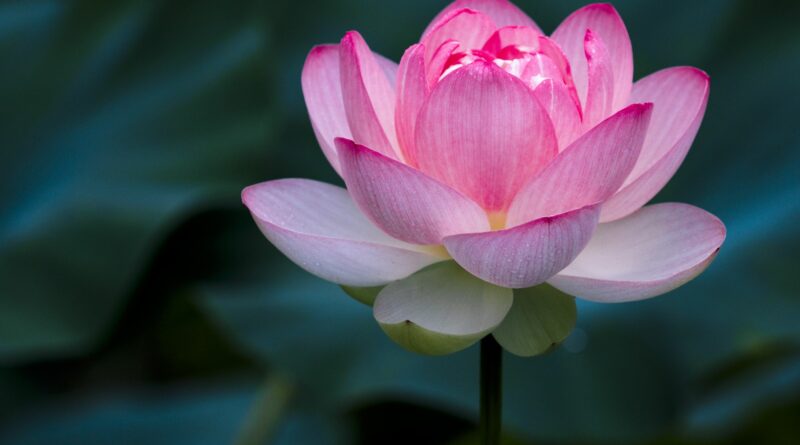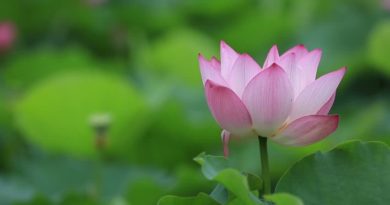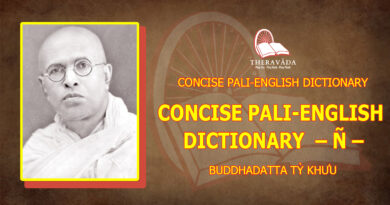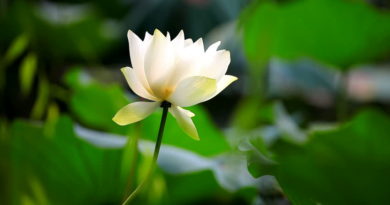NIBBANA FOR EVERYONE
MAIN CONTENT
NIBBANA FOR EVERYONE
A Truth Message from Suan Mokkh
Buddhadasa Bhikkhu
(adapted and translated by Santikaro Bhikkhu)
This text is a gift of Dhamma. You may print this file for your personal use, and you may make and distribute unaltered copies of this file, provided that you charge no fees of any kind for its distribution. Otherwise, all rights reserved.
When you hear the words “nibbana for everyone,” many of you will shake your heads. You’ll think that I’m trying to “dye cats for sale.” [“Dyeing cats for sale” is a Thai expression similar to “window dressing”: to dress up something shabby and inferior in order to trick the customer. All notes are added by the translator.] Maybe you don’t have any interest in the subject. This only happens because you understand the meaning of such words too narrowly and out of line with the truth.
In the schools children are taught that nibbana is the death of an Arahant. The ordinary man in the street has been taught that it’s a special city empty of pain and chock full of the happiness of fulfilled wishes, supposedly reached after death by those who store up perfections (“parami”) over tens of thousands of births. Modern social activists see it as an obstruction to progress that we shouldn’t get involved with or even discuss. Students in general consider it a matter for devout old folks at the temple with nothing of relevance for them. Young men and women think it’s bland and unexciting, awful and frightening. All the candidates for the monkhood merely mouth, “May I go forth in order to awaken to nibanna”. The old monks say nibbana can’t happen anymore in this day and age, and that an Arahant cannot exist anymore either. So finally, nibbana has become a secret that no one cares about. They’ve turned it into something barren and silent, buried away in the scriptures, to be paid occasional service in sermons while no one really knows what it is.
In fact, without this business of nibbana, Buddhism would be as good as dead. When nobody is interested in nibbana, then nobody is genuinely interested in Buddhism. When nothing about nibbana interests us, then we can’t get any benefits at all from Buddhism. I feel that it’s about time for us to get interested and bring about the highest benefit, as fits the words, “Nibbana is the Supreme Thing”–namely, the highest goal of living things, which is involved with our daily life at all times. NIBBANA HAS NOTHING IN THE LEAST TO DO WITH DEATH. The word “nibbana” means “cool.” Back when it was just an ordinary word which people used in their homes it also meant “cool.” When it is used as Dhamma language, in a religious context, it still means “cool,” but refers to cool from the fires of defilement (kilesa), while in the common people’s usage it means cool from physical fires.
Throughout the Pali scriptures, the word “nibbana” is never used in the sense of death. When death is discussed, the word “marana” is used. Otherwise, the word “parinibbana” is used, such as when the Buddha said, “The parinibbana will occur three months from now.
NIBBANA IS ONE OF THE DHATUS [natural conditions]. It is the coolness when the defilements are ended. Two types of this condition can be distinguished. In the first, the defilements are exhausted and cooled, but the sensory system, the organs that receive sensory stimuli, aren’t yet cool. In the second, this sensory system is also cooled. A white hot charcoal illustrates the difference. When it first goes out, it is still too hot to be handled. We must wait a while longer until it is thoroughly cool and can be touched. Through the explanations of later generations the meaning of “nibbana” has changed to “death.” Such changes and lapses are commonplace in this world, so nowadays we Thais use this distorted meaning. I myself was taught this way when I was a child. When I first became a bhikkhu, I still understood it this way, and told my friends and students to understand it likewise. Only when I could study the original Pali texts did I discover that nibbana was a whole other matter than death. Instead, it’s a kind of life that knows no death. Nibbana is the thing which sustains life, thus preventing death. It itself can never die, although the body must die eventually.
As things are, other Indian religions contemporary with Buddhism also used the word “nibbana”. In the Pali texts there’s a passage where the leader of another sect (from Southern India, around the Godavari River) sent sixteen students to ask the Lord Buddha about his version of nibbana. Their own understanding of nibbana may just as well have meant “death.” This story is well-known (in Theravada countries) under the name Solasapanha, the “Sixteen Questions” at the end of the Sutta-nipata [see the Parayanavagga in the Khuddakanikaya (Minor Anthologies) of the Pali Canon]. The point here is that the issue of nibbana was the highest concern of the Indian religions contemporary with Buddhism. There must have been at least one group that interpreted it as “death” and spread its teaching in the vicinity of Suvarnabhumi (“The Golden Land,” the ancient name of Siam) before Buddhism arrived here, leaving it behind as the general understanding of the common folk (similarly to what happened with atta (self) or atman (soul)). Now we had better return to our examination of nibbana as taught by Buddhism.
When Prince Siddartha first took up the homeless spiritual life, he wandered in search of the nibbana which is the total quenching of all dukkha (rather than death). From the famous teachers of India at that time, he learned nothing higher than nevasannanasannayatana (the experience of neither perception nor non-perception), a degree of mental tranquility so deep that we cannot describe it either as “death” nor as “non-death.” He couldn’t accept that as the supreme nibbana. So he went off to search on his own until he discovered the nibbana which is the coolness at the final end of defilement. He called it “THE END OF DUKKHA,” meaning the exhaustion of all the heat produced by defilement. However much the defilements are exhausted, there’s that much coolness, until there is perfect coolness due to the defilements being finished completely. In short, to the degree that which defilements are ended, there will be that much coolness or nibbana. That is, NIBBANA IS THE COOLNESS WHICH RESULTS FROM THE QUENCHING OF DEFILEMENT, whether they quench on their own or someone quenches them. Whenever the defilements are quenched, then there is the thing called “nibbana,” always with the same meaning–“coolness.”
Next, notice that the defilements are concocted things (sankharadhammas), that arise and cease. As it says in the Pali, Yankinci samudayadhammaam sabbantam nirodhadhammam (Whatever things are originated, all those will cease.)
Any defilements which have arisen cease when their causes and conditions are finished. Although it may be a temporary quenching, merely a temporary coolness, it still means nibbana, even if only temporarily. Thus there’s a temporary nibbana for those who still have some defilements they can’t avoid. This indeed is the temporary nibbana that sustains the lives of beings who are still hanging onto defilement. Anyone can see that if the defilements exist night and day without any pause or rest, no life can endure it. If it didn’t die, it would go crazy and then die in the end. You ought to consider carefully the fact that life can survive only because there are periods when the defilements don’t roast it, which, in fact, outnumber the times when the defilements blaze.
These periodic nibbanas sustain life for all of us, without exception, not even animals, who have their levels of nibbana, too. We are able to survive because this kind of nibbana nurtures us, until it becomes the most ordinary habit of life, or of the mind. Whenever there is freedom from defilement, then there is the value and meaning of nibbana. This must occur often enough for living things to survive. That we have some time to relax both bodily and mentally gives us the freshness and vitality needed to live.
Why don’t we understand and feel thankful for this kind of nibbana a little? We’re lucky that the instincts can manage by themselves. See, things with minds naturally search for periods that are free from defilement or thirst. If there is unremitting thirst, life must die. Thus, infants know how to suck the breast and mosquitos know how to buzz around sucking blood to sustain their lives until they are slapped to death. Our instincts have this virtue built in: they search for periods of time sufficiently free from defilement or free from thirst to maintain life. Whenever there is freedom and voidness there is always this little nibbana, until we know how to make it into the permanent or perfect nibbana of the Arahant. It isn’t death, but rather is deathlessness, in particular, spiritual deathlessness. If anyone sees this fact, they’ll personally experience that we can survive only through this kind of nibbana. We don’t survive just because of that rice and food which people are so infatuated about. We will realize that everybody must have this thing called “nibbana” and must depend on it as their lives’ sustenance. So who can object to us talking about “nibbana for everyone.”?
In order to better understand the meaning of the word “nibbana,” we ought to look at it from the perspective of linguistics. A material sense of the word is found in the words “pajjotasseva nibbanam” This “nibbana” refers to the ordinary quenching of fire. When the rice porridge is still hot, the cook yells out from the kitchen, “wait a moment, let it nibbana a bit.” When the goldsmith melts down gold and pours it into a mold, he sprinkles water on it to cool it down. The word used in Pali here is “nibbapeyya”, to first make it nibbana or cool before working it into some shape or form.
Even the wild animals which are captured from the jungle and made tame like a pussycat are said to have been “made nibbana.” Sensual pleasures cool down foolish people in a way appropriate for them. The unwavering concentrations on material forms (rupajhanas) bring a coolness free from the fire of sensuality. Although temporary, these (the jhanas) are certain levels of nibbana. The “experience of nothingness” (Akincannayatana) and the other arupajhanas bring a coolness free from the fire that arises out of attractive material things. Nibbana due to the ending of all defilements brings the final coolness which is the ultimate in all respects.
Certain groups of teachers have come up with the word “sivamokkhamahanibbana,” which they explain as some kind of town or city. Although no one can make any sense of it, they keep it around as something to bow to when this strange word is exclaimed from the pulpits of your run of the mill temples.
There is also the word “nibbuti”, which means an ethical level of nibbana. It refers to a cool heart or cool life such as that which impressed a young woman on seeing Prince Siddhartha. She said, “Whosever son this gentleman is, his mother and father are nibbuta (that is, cool); whosever husband he is, that woman is nibbuta (once again, cool).” These have the meaning of nibbana, too. Nowadays the monks in Thailand chant the benefits of ethical behavior with “silena nibbutim yanti,” which means nibbuti is achieved through sila (ethics). This comes after the lesser benefits of sila, such as acquisition of wealth and getting to sugati (happy births). The purpose here is for nibbana to have a place in ordinary daily life.
That coolness of heart and peace of mind which everyone desires is the meaning of nibbana. But people misunderstand it and aim only for sex, which is hot stuff. So they get a deceptive nibbana. People have clung to such an interpretation since, or even before, the Buddha’s time, such as can be found among the sixty-two wrong views listed in the Brahmajala Sutta.
Look for a moment. What is the history and basic meaning of the word “nibbana”? In all cases it points to coolness of heart and mind, according to the higher or lower feelings of each person. The essential meaning, however, is always in the nurturing and sustaining of life. It lessens the time when fires are burning the mind just enough for us to survive, and eventually develops to the highest level which absolutely quenches all fires. The highest degree of realization in Buddhism, according to the Buddha, is the end of lust, the end of hatred, and the end of delusion, which is the final quenching of all fires and the coolest cool which life can be.
NIBBANA IS NOT THE MIND, BUT IS SOMETHING WHICH THE MIND CAN EXPERIENCE, or, as the Buddha put it, is a certain ayatana which wisdom can experience. Forms, sounds, odors, flavors, and tactile sensations are material or physical ayatana, things the body can experience. Akasanancayatana (the experience of endless space) up to and including nevasannanasannayatana are mental ayatana for the mind to experience. Then, nibbana is a spiritual ayatana for mindfulness and wisdom to contact or realize. It should be considered something which Nature has provided for human beings at the highest level. We should know it so that nibbana and our lives are not in vain. Every one of us has mindfulness and wisdom in order to touch nibbana. Don’t let it go to waste!
THE NIBBANA-ELEMENT EXISTS NATURALLY so that there will be realization of nibbana, like a precious medicine which ends all dukkha. There is the dukkha or disease which ordinary medicines cannot cure, namely, the disease of defilement which must be cured by the extinction of defilements, through which this nibbana-dhatu is realized. This highest spiritual illness lies deeply hidden in us and torments us secretly. Anyone who can quench it has come to the pinnacle of being human.
THE WORDS “THERE IS NO NIBBANA” ARE MORE WRONG THAN WRONG because the nibbana-element exists naturally everywhere always, only nobody is interested enough to find it. The Lord Buddha discovered and revealed it to us through his enormous compassion, but we cut the story short thinking that in this era there is no nibbana anymore, when we should instead say that nobody understands or is interested in it. By merely becoming proper followers of the Buddha, nibbana will appear. It is already waiting for people to find it.
WE CANNOT CREATE NIBBANA because it is beyond all causes and conditions, but we can create the conditions for realizing nibbana, namely, all actions which lead to the abandonment of the defilements. We won’t speak as others do by saying “doing good is a condition for nibbana. Condition (paccaya) implies causal necessity, but there is nothing which has such power over nibbana. The right words are “it is a condition for realizing nibbana,” which can be done in any age or period. Old folks like the words “Stairway to Nibbana” because they think it is a place or city. That’s what they have been taught. Still, it is an acceptable enough phrase, meaning simply “condition for the realization of nibbana.”
THERE ARE MANY SYNONYMS OF NIBBANA, dozens of them–for example, the Deathless, Permanence, Peace, Safety, Health, Diseaselessness, Freedom, Emancipation, Shelter, Refuge, Immunity, Island (for those fallen into water), Highest Benefit, Supreme Joy, the Other Shore, that which should be reached eventually, and the End of Concocting. All of these are thoroughly cool, because there aren’t any fires to make them hot. Peaceful coolness is their meaning or value–unfortunately it is a value too subtle to interest people who are still overly enveloped in defilements. When brushing aside the defilements for the first time, you will be delighted by nibbana more than anything else. This is certain, and possible for everyone. May we take the word “cool” as the highest value.
THE EXPRESSION WHICH BEST CONVEYS THE MEANING OF NIBBANA IS “THE END OF DUKKHA.” Although the Buddha used this term, it’s of no interest for those people who don’t feel that they have any dukkha. They don’t feel they have dukkha: they want the things they want and there isn’t any dukkha to quench. And so they don’t care about quenching dukkha or about the end of dukkha. Even a large number of the many foreigners who come to Suan Mokkh have that feeling. But once we tell them there is a new life, or quenching of thirst, or life which is beyond positive and negative, they become extremely interested. This is the difficulty of language, which we must use to get people interested in nibbana. For each person, there must be one translation of the word “nibbana” especially for that person. This is not a small difficulty. Yet deep down, without being conscious of it or having any intention, everyone wants nibbana purely through the power of instinct.
THE STUDY OF NIBBANA IN DAILY LIFE is possible in order to better understand and have greater interest in nibbana’s meaning. When seeing a fire go out or something hot cooling down, look for the meaning of nibbana. When bathing or drinking ice water, when a breeze blows or rain falls, take notice of the meaning of nibbana. When a fever subsides, a swelling goes down, or a headache goes away, recognize the meaning of nibbana as being found in those things. When perspiring, sleeping comfortably, or eating one’s fill, see the meaning of nibbana. When seeing an animal with all its fierceness and danger tamed out, see the meaning of nibbana. All of these are lessons to help us understand the nature of nibbana in every moment. The mind will regularly incline towards contentment with nibbana and this helps the mind to flow more easily along the path of nibbana.
Whenever finding coolness in your experience, mark that coolness firmly in your heart, and breathe out and in. Breathing in is cool, breathing out is cool. In cool, out cool–do this for a little while. This is an excellent lesson which will help you to become a Nibbanakamo (Lover of Nibbana) more quickly. The instincts will develop in an enlightened (bodhi) way more than if you don’t practice like this. Natural nibbana–the unconscious quenching of defilement–will occur more often and easily. This is the best way for the mind to help nature.
In conclusion, nibbana is not death. It is the coolness and deathlessness which is full of life. In the Pali scriptures, the word “nibbana” is never used regarding death. Nibbana is a natural element always ready to make contact with the mind in the sense of being one kind of ayatana (sensible thing). If there were no nibbana, Buddhism would have no meaning. The genuine kind of nibbana, different from the nibbana of other sects, was discovered by the Buddha. Natural nibbana can happen simply because the defilements arise and end naturally because they are just another kind of concocted nature. Every time the defilements don’t appear, nibbana is manifested to the mind. This kind of nibbana nourishes the lives of living things so they survive and don’t go crazy. At least, it lets us sleep at night. Nibbana isn’t any kind of special city anywhere. It is in the mind which is now void of besieging defilements. For the morality of ordinary people at home, its name is “nibbuti.” Nibbana isn’t the mind, but it appears to the mind as a certain ayatana. We can experience nibbana here and now by breathing in cool and breathing out cool. It is the automatic quenching of heat, of thirst, of dukkha in ordinary life, without our being conscious of it. It is the eternal nourishment and sustenance of life.
I hope that you all will begin to know that “nibbana for everyone” isn’t just “dyeing cats for sale,” but is the genuine cat for catching rats–that is, dukkha and anxiety–according to the mindfulness and wisdom of each person!
Buddhadasa Bhikkhu







